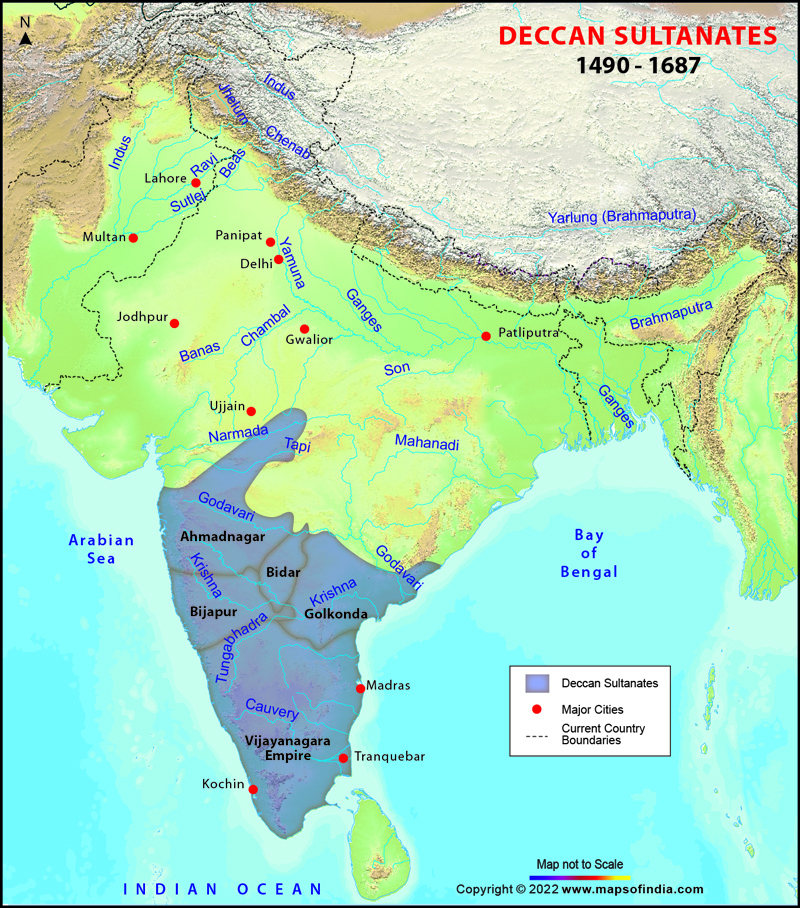THE BAHMANI KINGDOM (1347-1526)

· The Bahmani kingdom was founded in 1347 by Hasan Gangu who revolted and proclaimed his independence from the Sultanate.
1. Firuz Shah (1397-1422) who twice defeated Vijayanagar but was ultimately defeated at Pangul;
In his campaign against Vijayanagar in 1481 he even reached and plundered Kanchi. He overran Dahlol and Goa on the western coast.However, Gawan was a Persian by birth and hence disliked by the 'Deccani' chiefs who were native. The Deccani party conspired against him and got him executed in 1481.

Gradually, the Bahmani kingdom declined in power till, in 152~, Amir Barid usurped the throne. Thus the dynasty came to an end.
DECCAN SULTANATES

o The Deccan Sultanates were five Muslim ruled kingdoms located in the Deccan plateau
o The five kingdoms of the Deccan Sultanates were
o The Deccan Sultanates were generally rivals but united against the Vijayanagara Empire in the Battle of Tallikota in 1565
Ahmadnagar Sultanate
Berar Sultanate
Bidar Sultanate
Bijapur Sultanate
Golconda Sultanate
************************************************************************
Do you know
CHAND BIBI

 |
· Chand Bibi also known as Chand Khatun or Chand Sultana was a woman warrior who positioned herself as a rebellious counterpart in her self willed struggle for freedom.
· Chand Bibi, daughter of the sultan of Ahmednagar and wife of Adil Shah I of the Bijapur sultanate
· She acted as the Regent of Bijapur (1580-90) as well as the Regent of Ahmednagar (1596-99).
· She acted as the wall for Ahmednagar and in the history of India as well as humanity.
· She is best known for defending Ahmednagar against the Mughal forces of Emperor Akbar.
· However, in subsequent engagements with Akbar’s son, Daniyal, she could not resist the might of the Mughal forces and was forced to negotiate a treaty.
· It is said that Chand Bibi was killed by her own troops, who believed she had sold out to the enemy.

No comments:
Post a Comment